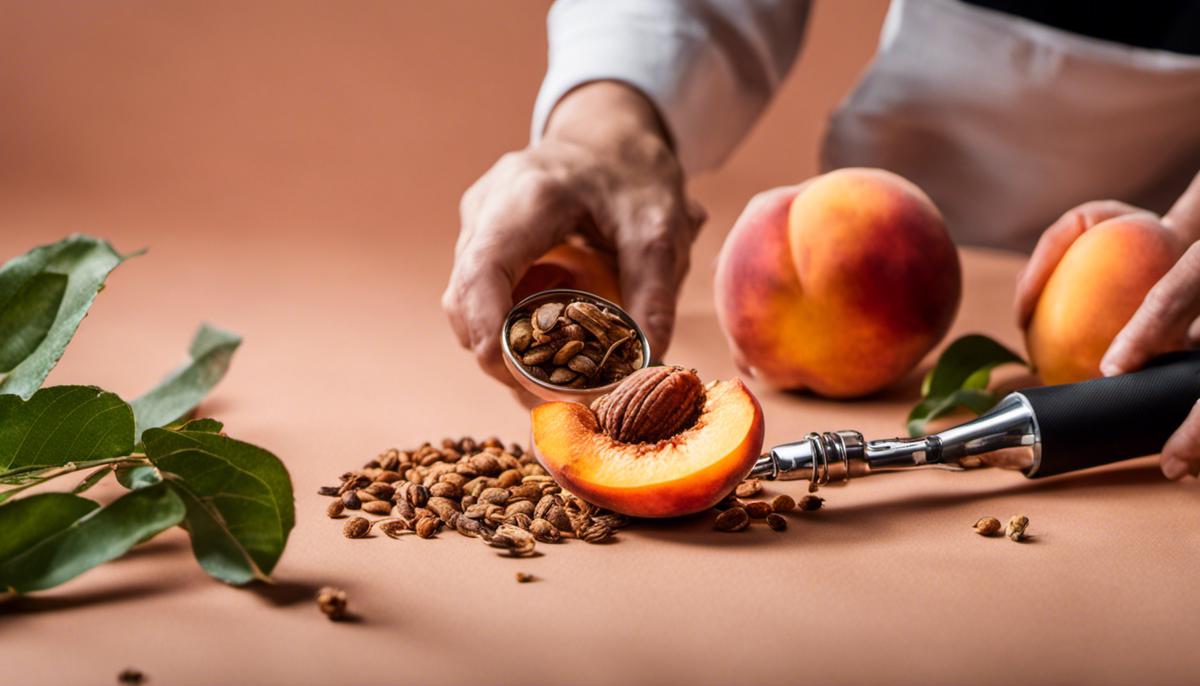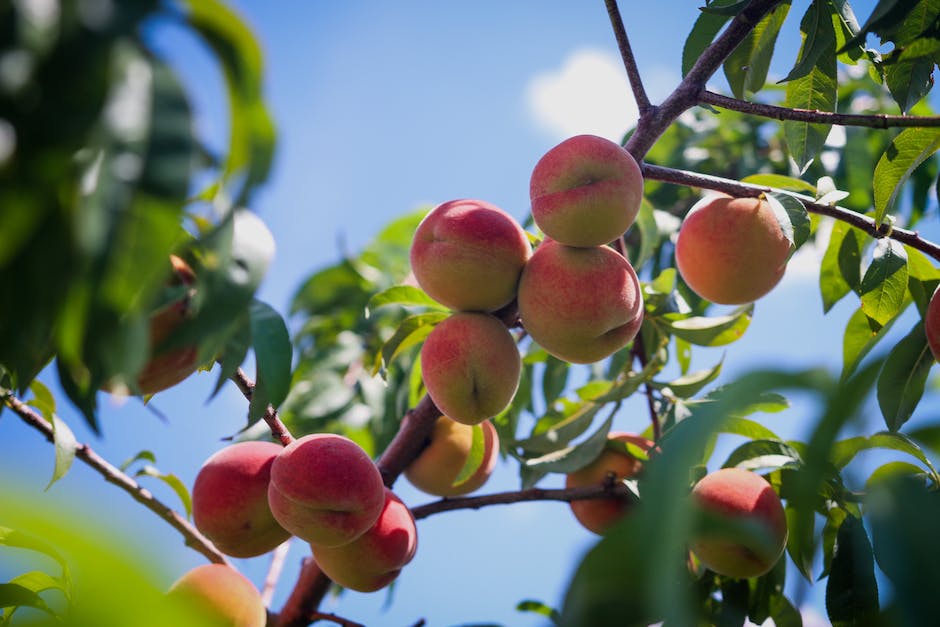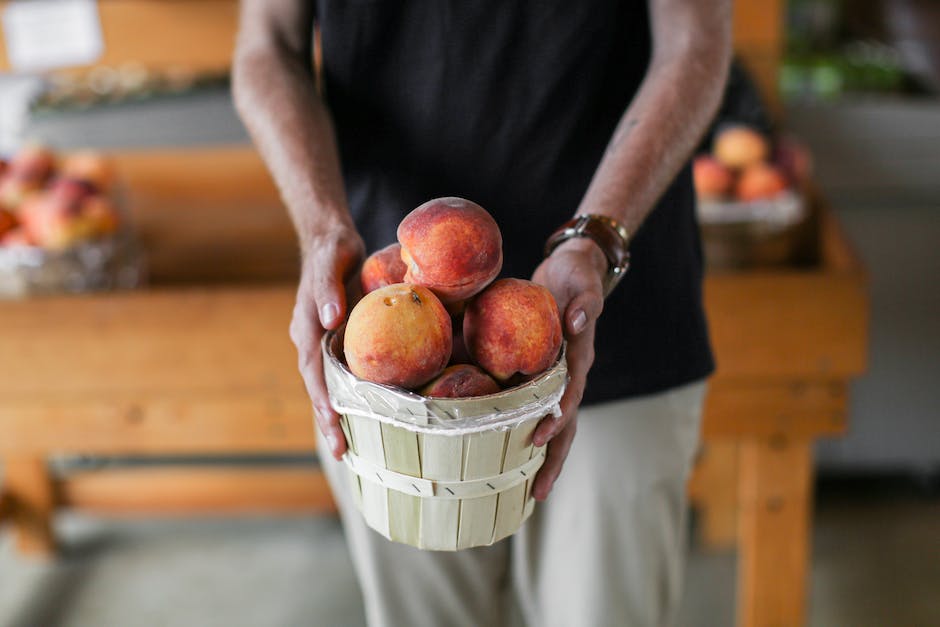Grow a Peach Tree From a Pit: A Guide

Amongst the joys of home gardening, the process of growing a tree from a tiny pit is a rewarding journey. This particular exploration will take us through the beautiful transformation of a simple peach pit into a vibrant, fruit-bearing tree. It not only provides an engaging hobby but also offers a self-sustainable way of getting delicious peaches right in your backyard. This guide will cover everything, starting from selecting the right peach pit to the intricate process of its germination, and finally to the nurturing of the plant, ensuring its right care and maintenance. Are you ready to embark on this enriching journey?
Preparing the Peach Pit
Master the Art of Preparing Peach Pits for Planting
Peaches aren’t merely a fantastic summer fruit basking in natural sweetness — they also herald the potential of a stunning peach tree! For anyone enthusiastic about gardening, the prospect of preparing your peach pit for planting is equally exciting and rewarding. Let’s delve into the meticulous art of giving your peach pit the best chance for a robust, healthy life!
First and foremost, selecting the right peach pits is crucial. Using pits from store-bought peaches isn’t the most ideal due to their origin from hybrid trees. This might result in a tree that doesn’t bear fruit or yields peaches distinctly different from the parent peach. So, for the best outcome, scope out local farmers markets or peach orchards for ripe, local peaches.
The next task: the cleaned pit needs to trick nature to break dormancy, a procedure fondly known as stratification. Start this process once you’ve extracted and thoroughly cleaned the pit. Soak the peach pit overnight in a bowl of water, drying it gently on a paper towel the next day. This is pivotal to improve germination chances and plays a significant role in the pit’s journey to becoming a tree.
The adventure continues by chilling the peach pit to simulate winter conditions — a critical part of the stratification process. Secure the pit in a plastic bag filled with damp peat moss, replacing the air in the bag with your breath before sealing it shut. This emulates the carbon dioxide-rich environment of soil. Then it’s a trip to the refrigerator, where the pit should stay nestled for a duration of at least 8 – 10 weeks.
Ensuring the temperature stays consistent during this period is key, as fluctuating conditions can confuse the pit, stunting the process. The optimal refrigeration temperature is ideally between 34 and 42 degrees Fahrenheit, so opt for a spot in the refrigerator where this range is most likely to be maintained.
Signs of a successful stratification process are the sprouting of roots from the pit. Once this beautiful process begins, the pit is ready for planting. It’s important to wait until the danger of frost has passed, as cold conditions could harm your sprouting pit. When planting, choose a sunny spot with well-draining soil. The pit should be placed about 3 inches deep, with the sprouted root pointing downwards into the soil. Cover it up, water generously, and — voilà! Your peach pit is on its way to becoming a lush peach tree.
Keep in mind, caring for your young peach tree involves watering regularly and maintaining a nutrient-rich soil environment. Peach tree enthusiasts can look forward to an exciting journey as they monitor the pit’s remarkable transformation. So, here’s to the simple joy of coaxing a tiny pit into a bountiful tree! From pit to peach – now that’s an adventure sure to add extra flavor to your gardening endeavors. Happy planting!

Planting and Caring for the Peach Tree
Once the young peach tree has sprouted from the pit, a couple of crucial steps need to be taken to make sure it grows into a healthy, fruitful tree.
The very first, and arguably most essential step, is understanding the phases of peach tree growth and the care required at each stage. After the peach pit sprouts, it will enter the seedling stage where growth happens quickly. During this period, regular watering is vital as the roots aren’t yet deep enough to pull moisture from deeper soil layers.
Next, the little tree enters its sapling stage. At this stage, roots spread deeper into the soil, and the tree develops a strong spine that will support the fruit. The sapling phase is where attentive pruning comes into play. Pruning, or selectively slicing away some branches, improves air circulation and sun exposure, vital factors in preventing diseases.
As a general guide, any branches that grow inward or compete with the main branches should be pruned away. But remember, over-pruning can throw off your tree’s balance between growth and fruit production, so be prudent and ensure you retain some of the young, vigorous branches!
On to fertilizing: is it necessary? Yes! Peach trees are heavy feeders and require adequate nutrients to produce juicy, delicious peaches. Use a slow-release granular fertilizer high in phosphorus and potassium and lower in nitrogen in the late winter or early spring.
These steps will help establish the beginnings of a fantastic peach tree, but it doesn’t stop there! Regular inspection of your tree for signs of disease or pests like aphids, spider mites, or peach tree borers is crucial for maintaining good tree health. If spotted, organic or chemical pest control options can be employed based on personal preference or local guidelines.
Last but certainly not least, be patient. Peach trees can take anywhere between two to four years to start producing fruit. But remember, peach trees are not just producers of delicious fruit, but also gorgeous landscaping with their lovely pink blossoms in spring.
Following these steps sets the stage for strong growth and a successful fruit yield from your peach tree. Here’s to a blossom-filled spring and a juicy peach-filled summer! Reach out to local nurseries or a university extension service for specific advice tailored to your region and happy gardening!

Ongoing Maintenance of a Peach Tree
Peach trees have unique phases of growth, each requiring specialized care. It’s essential to understand these stages to get the best from your tree.
The initial stage, the seedling phase, primarily involves careful watering. Watering at a slow, steady pace until the soil is moist is vital to avoid drowning or dehydrating the tree.
In the sapling stage, pruning becomes critical. Pruning stimulates tree growth and increases fruit production, letting sunlight and air reach all parts of the tree. It should be done correctly, and at the right time, typically late winter or early spring before any new growth begins. When pruning, cut away crowded, inward-facing, or damaged branches first. Uphold the tree’s natural shape by leaving central branches that form an open centre.
As the peach tree matures, regular fertilization becomes increasingly important. Peach trees are heavy feeders and typically require more nitrogen than other fruit trees. Use an all-purpose garden fertilizer unless a soil test suggests otherwise. Applying fertilizer just before the onset of new growth in early spring can boost tree health.
Vigilant inspection of peach trees is a must to detect signs of diseases or pests early. Peach leaf curl and peach tree borer are common issues. Signs of these include curled, red discolored leaves, and sawdust-like frass around the base of the tree. If these signs emerge, it’s crucial to use suitable pest control options. Organic, synthetic, and biological control methods are available, but make sure to choose the one that fits best with your gardening ethos.
Concerning fruit production, peach trees aren’t the quickest. Expect a wait of 2 to 4 years before you can harvest your first fruit. But remember, gardening is a patience game, and the wait will definitely be rewarding.
Finally, besides its fruit, peach trees offer splendid aesthetic value. The pink blossoms they sport in spring can truly enhance the beauty of any landscape, making peach trees an excellent choice for garden enthusiasts.
For region-specific peach tree care tips, local nurseries and university extension services can be invaluable resources. They can provide advice tailored to your local soil conditions, climate, and common pests or disease issues.
Remember, the journey of growing a peach tree is rewarding in more ways than one. Take the time to enjoy and learn from every stage. Happy peach tree gardening!

A healthy peach tree is much more than a beautiful visual addition to your garden. It’s a livelong fruit source, a testament to your nurturing, and an embodiment of nature’s incredible process of growth. Whether you’ve chosen to plant indoors or outdoors, remember that each tree is unique, with its requirements and growth timeline. The information provided in this guide, covering each step detail, from the selection of a healthy peach pit to the germination process, and ongoing tree maintenance needs, should equip you with the right knowledge to succeed in growing your peach tree. May you enjoy the fruits of your labor, quite literally, for years to come!



